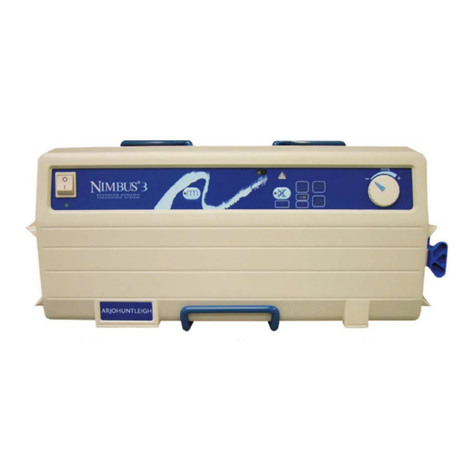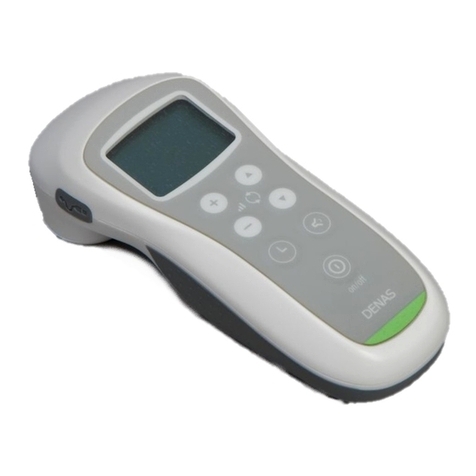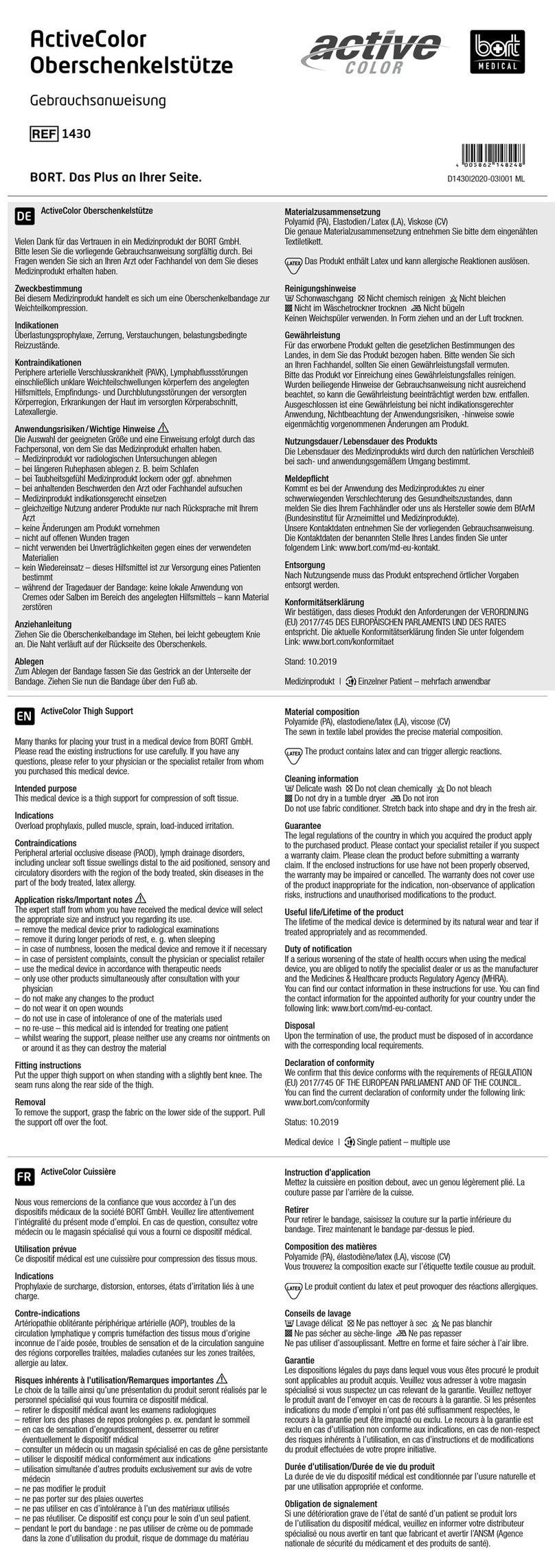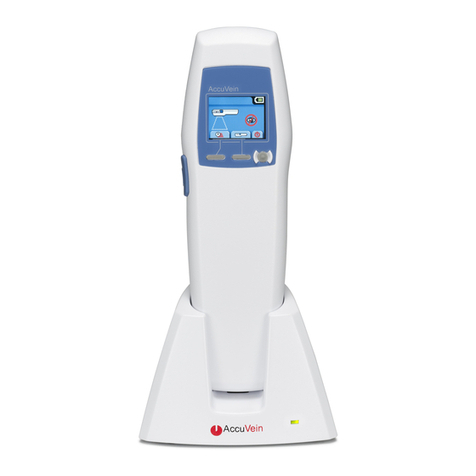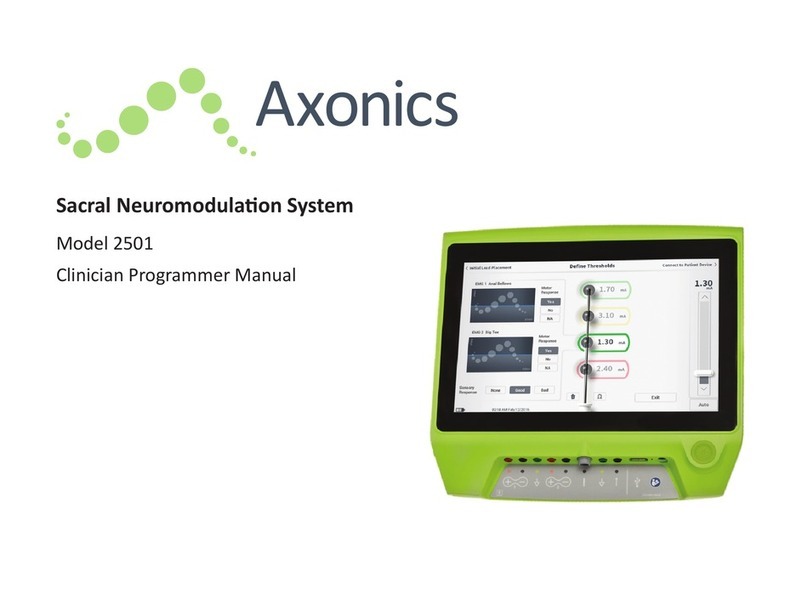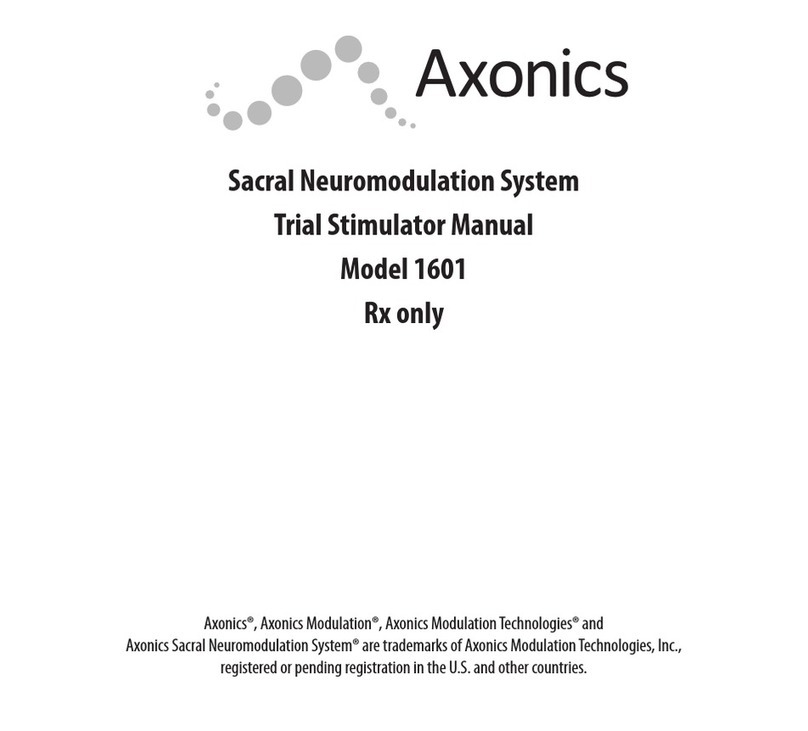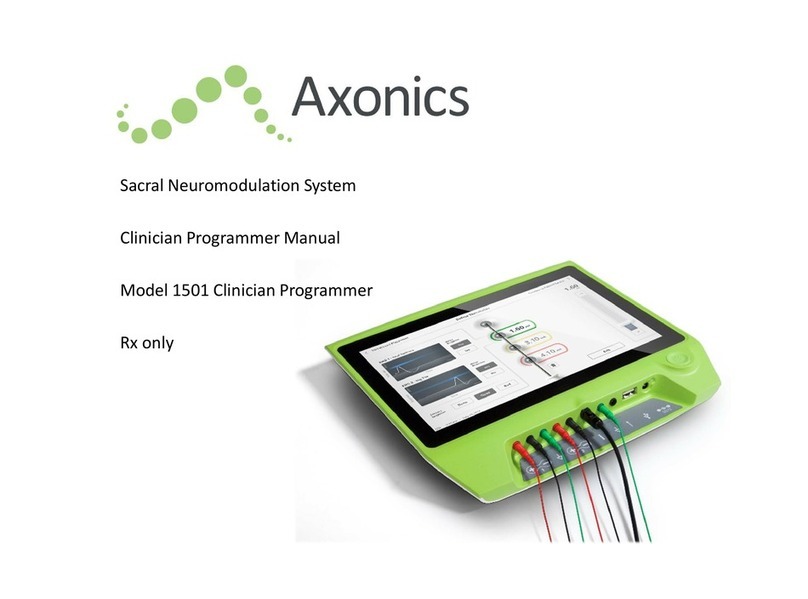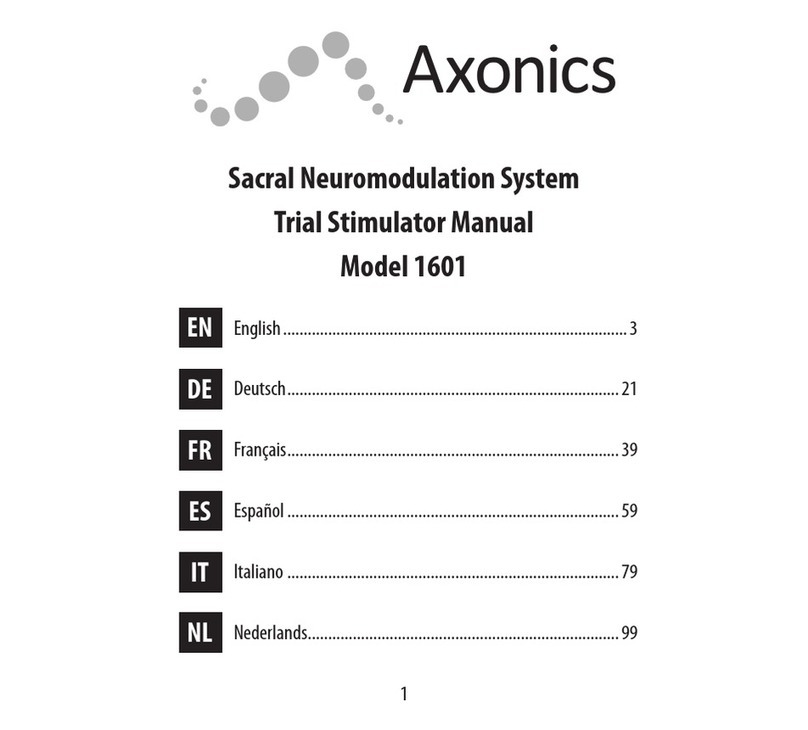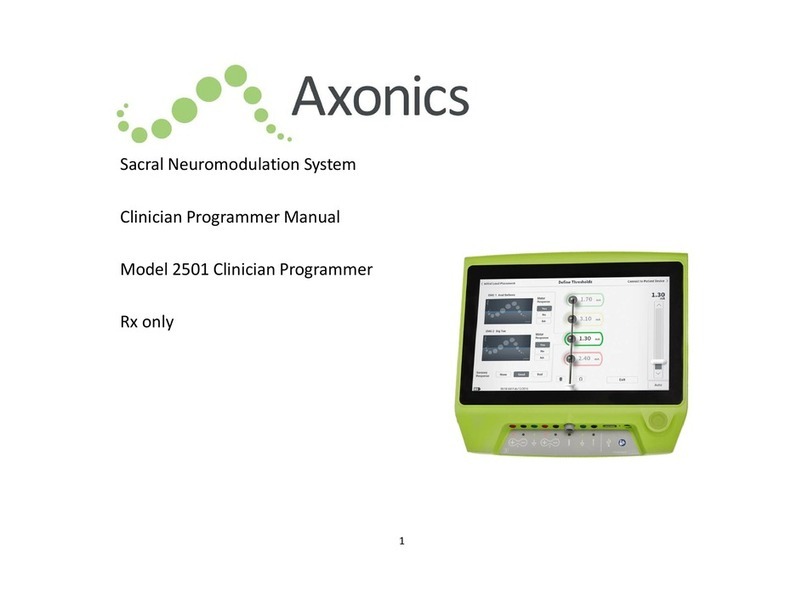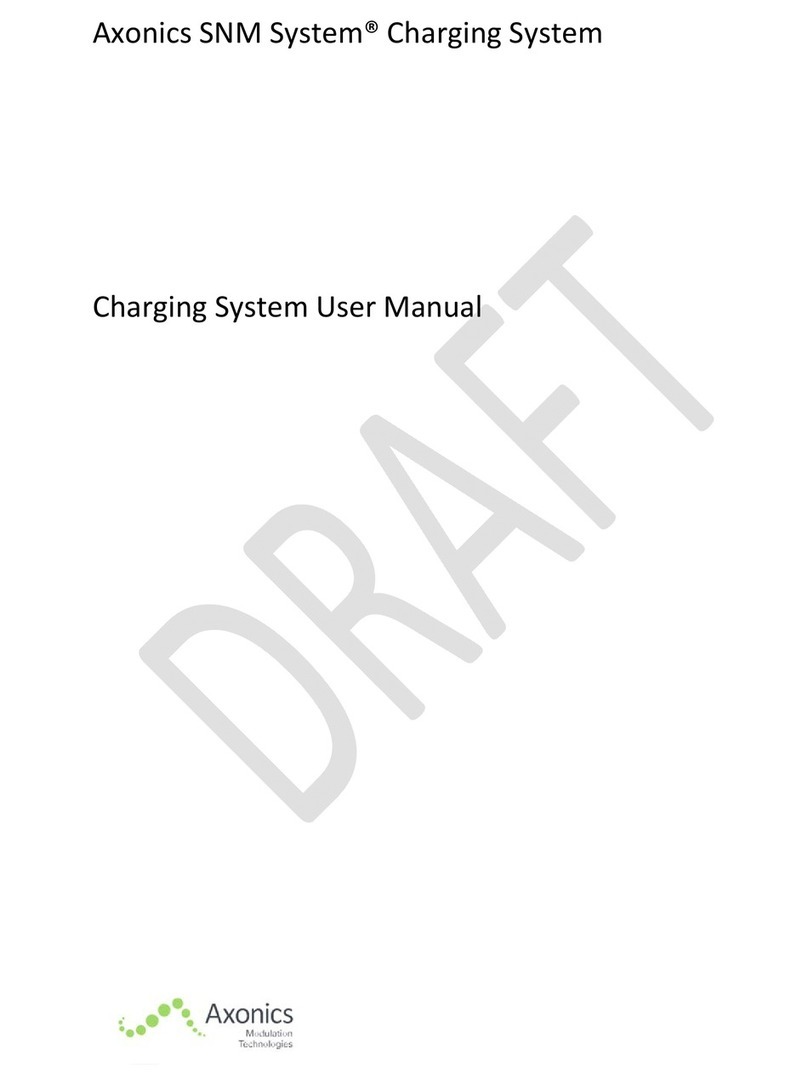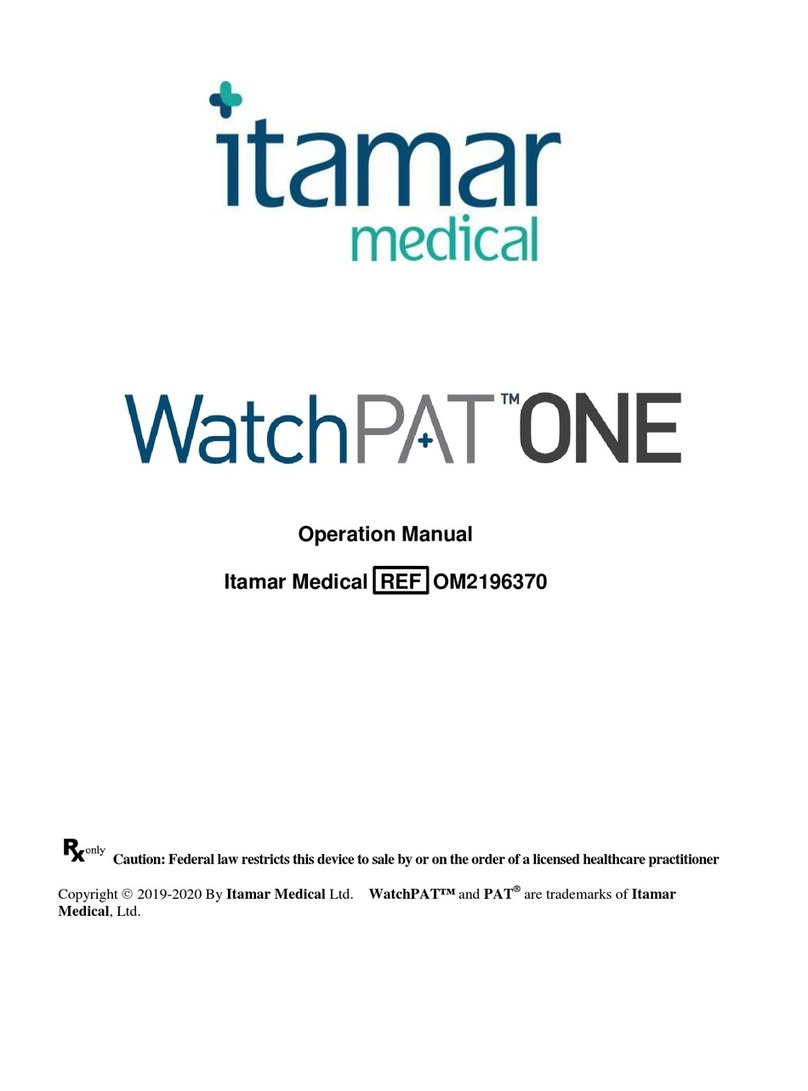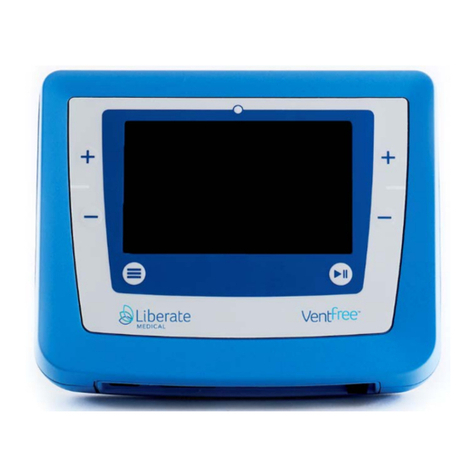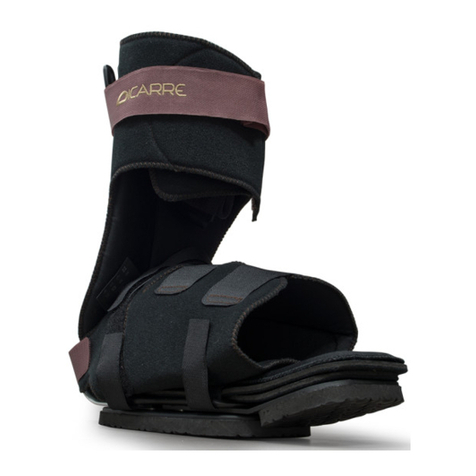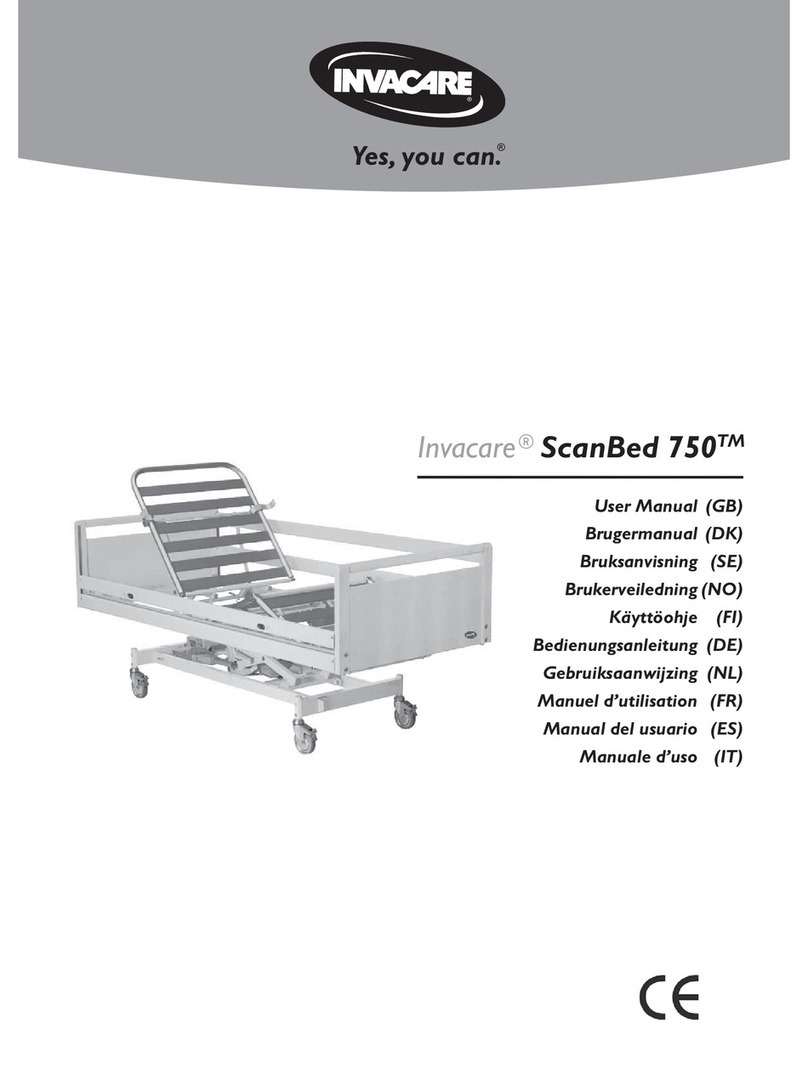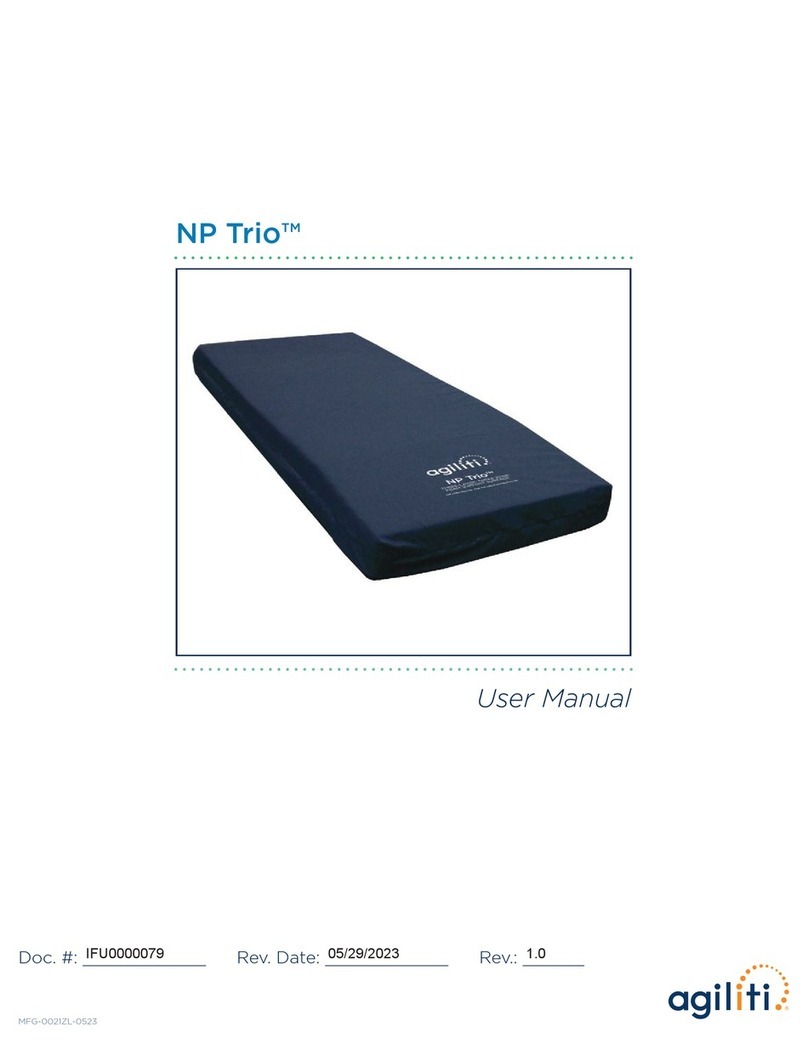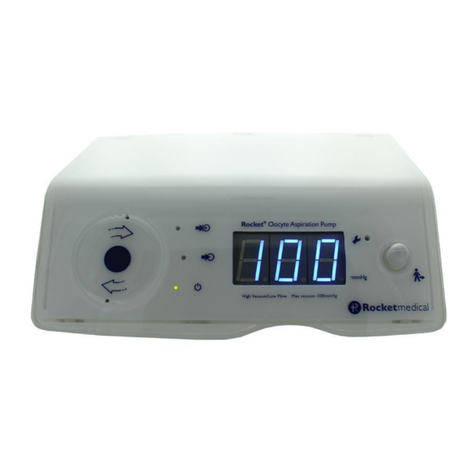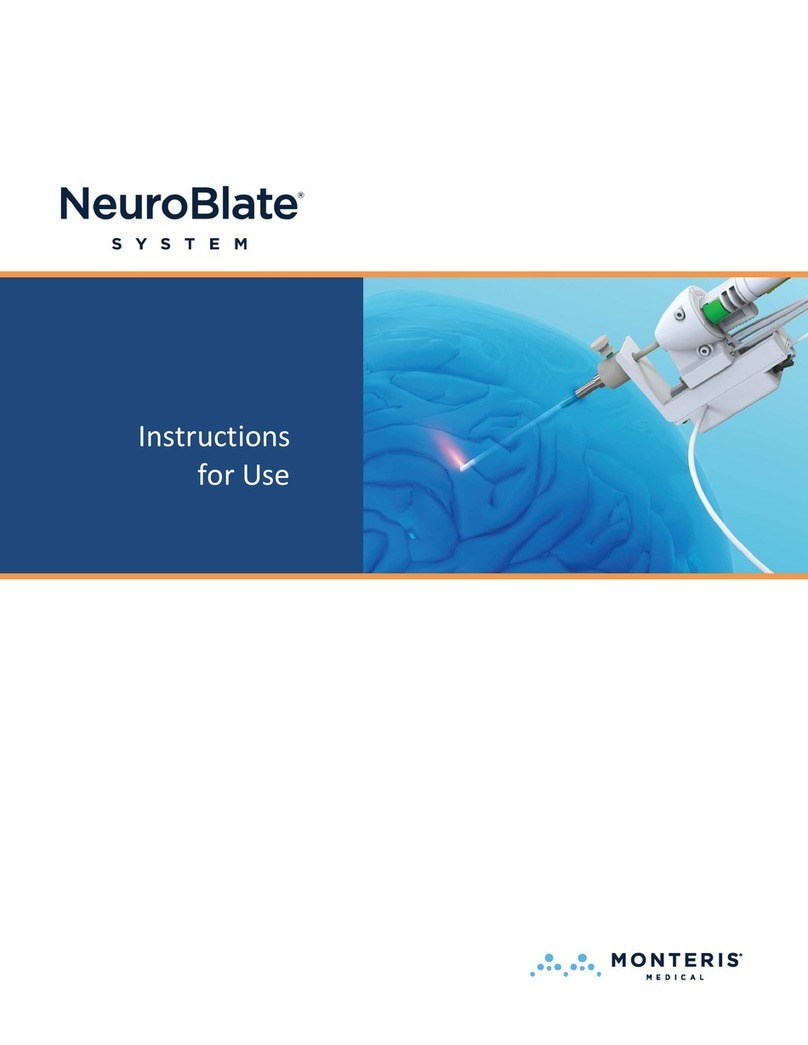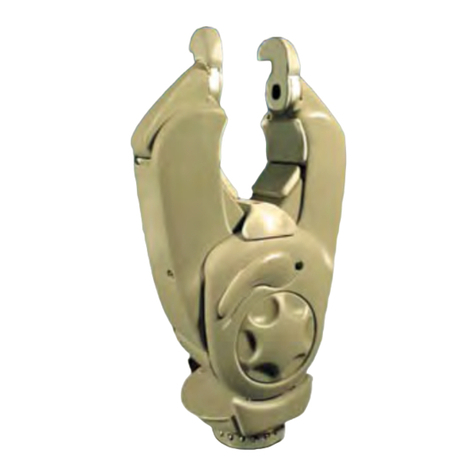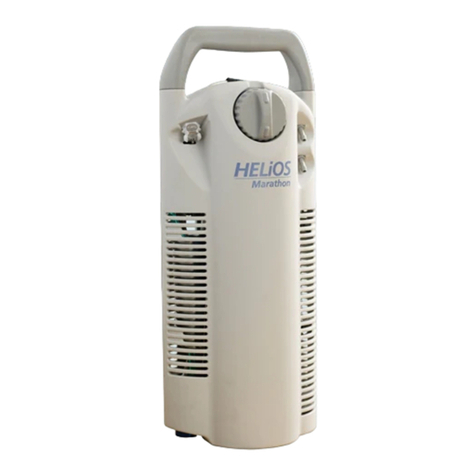
7
Additional medical procedures that may aect the Axonics SNM System and should be avoided include:
• Lithotripsy
• Monopolar electrosurgery
• Microwave and Radio-frequency (RF) ablation
• Radiation therapy over the Neurostimulator
• Ultrasound or scanning equipment
Electromagnetic interference (EMI)
Electromagnetic interference is energy generated by equipment found at home, work, or in public that can interfere with the function of the Axonics SNM System.The Axonics SNM System
includes features that provide protection from EMI so that most electrical devices encountered in a normal day are unlikely to aect the operation of the Neurostimulator.While everyday
electrical devices are unlikely to aect the Neurostimulator, there are strong sources of EMI that pose a higher risk, including theft detectors, security gates, and security wands. If patients
encounter any of these electrical devices, they should walk as far away from the sides of the device when passing through. Additionally, patients should minimize their exposure to these
devices by not lingering in the immediate area of the device. Sources of strong EMI can result in the following:
•Serious patient injury, resulting from heating of the Neurostimulator and/or leads that causes damage to surrounding tissue.
•System damage, which may require surgical replacement due to change in symptom control.
•Operational changes to the Neurostimulator, causing it to turn on or o or to reset the settings, resulting in loss of stimulation or return of symptoms, causing a need for
reprogramming by the clinician.
•Unexpected changes in stimulation, leading to a sudden increase or change in stimulation, which may be experienced as a jolting or shocking sensation.While the sensation
may be uncomfortable, the device would not be damaged nor would it cause direct injury to the patient. In rare cases, the change in stimulation may cause the patient to fall and
be injured.
Case Damage
The Neurostimulator contains battery chemicals that could cause severe burns if the Neurostimulator case were ruptured or pierced.
Eects on other implanted devices
The eect of the Axonics SNM System on the operation of other implanted devices, such as cardiac devices, other Neurostimulators, and implantable drug pumps, is not known. In
particular, if the Axonics device is implanted close to one of these devices, they may have sensing problems and/or inappropriate device responses. Potential interference issues should be
investigated before surgery by clinicians involved with both devices. The programming of the devices may need to be optimized to provide maximum benet from both devices.
Neurostimulator interaction with implanted cardiac devices
When a patient needs both an Axonics SNM System and an implanted cardiac device (for example, a pacemaker or debrillator), interactions between the two devices should be
discussed by the patients’ physicians involved with both devices (such as the cardiologist, electrophysiologist, urologist, and urogynecologist) before surgery. To reduce potential
interference, the devices should be implanted on opposite sides of the body and as far away from each other as practical.
• The stimulation pulses produced by the Axonics SNM System may interact with cardiac devices that sense cardiac activity, leading to inappropriate behavior of the cardiac device.
PRECAUTIONS
Clinician programming
Parameter adjustment –The steps below should be taken to prevent sudden stimulation changes that lead to an uncomfortable jolting or shocking feeling:
• Stimulation parameters should be changed in small increments.
• The stimulation amplitude should be allowed to ramp to full amplitude slowly.
• Before disconnecting the stimulation cable or turning the simulation on or o, the stimulation amplitude should be decreased to 0.0 mA.
Sensitivity to stimulation – Some patients, especially those that are very sensitive to stimulation, may be able to sense the telemetry signals associated with reprogramming.
Programmer interaction with a cochlear implant – Patients with cochlear implants should keep the external portion of their cochlear implant as far from the Clinician
Programmer (CP) or Remote Control as possible to minimize unintended audible clicks or other sounds.
Programmer interaction with ammable atmospheres – The CP is not intended to be used in the presence of a ammable gas, and the consequences of using the CP in such
an environment is not known.
Programmer interaction with other active implanted devices – When a patient has a Neurostimulator and another active implanted device (for example, a pacemaker,
debrillator, or another neurostimulator), the RF signal used to program any of these devices may reset or reprogram the other devices.
Whenever the settings for these devices are changed, a clinician familiar with each device should check the program settings of each device before the patient is released (or as soon as
possible). Patients should contact their physician immediately if they experience symptoms that are likely to be related to the devices or their medical condition.
Axonics 110-0003 rev M_output.indd 7 9/25/18 7:49 AM
